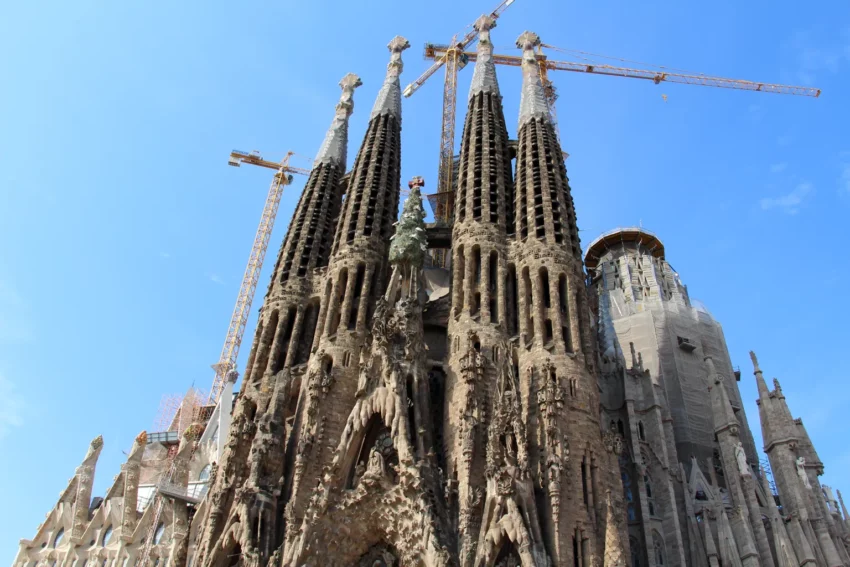Introduction to Sagrada Família
The Basílica i Temple Expiatori de la Sagrada Família, commonly known as Sagrada Família, is a Catholic church in Barcelona, Spain. It is the largest unfinished Catholic church in the world. Catalan architect Antoni Gaudí designed it. In 2005, UNESCO added Gaudí’s work on Sagrada Família to the World Heritage Site “Works of Antoni Gaudí.”
Get your dose of History via Email
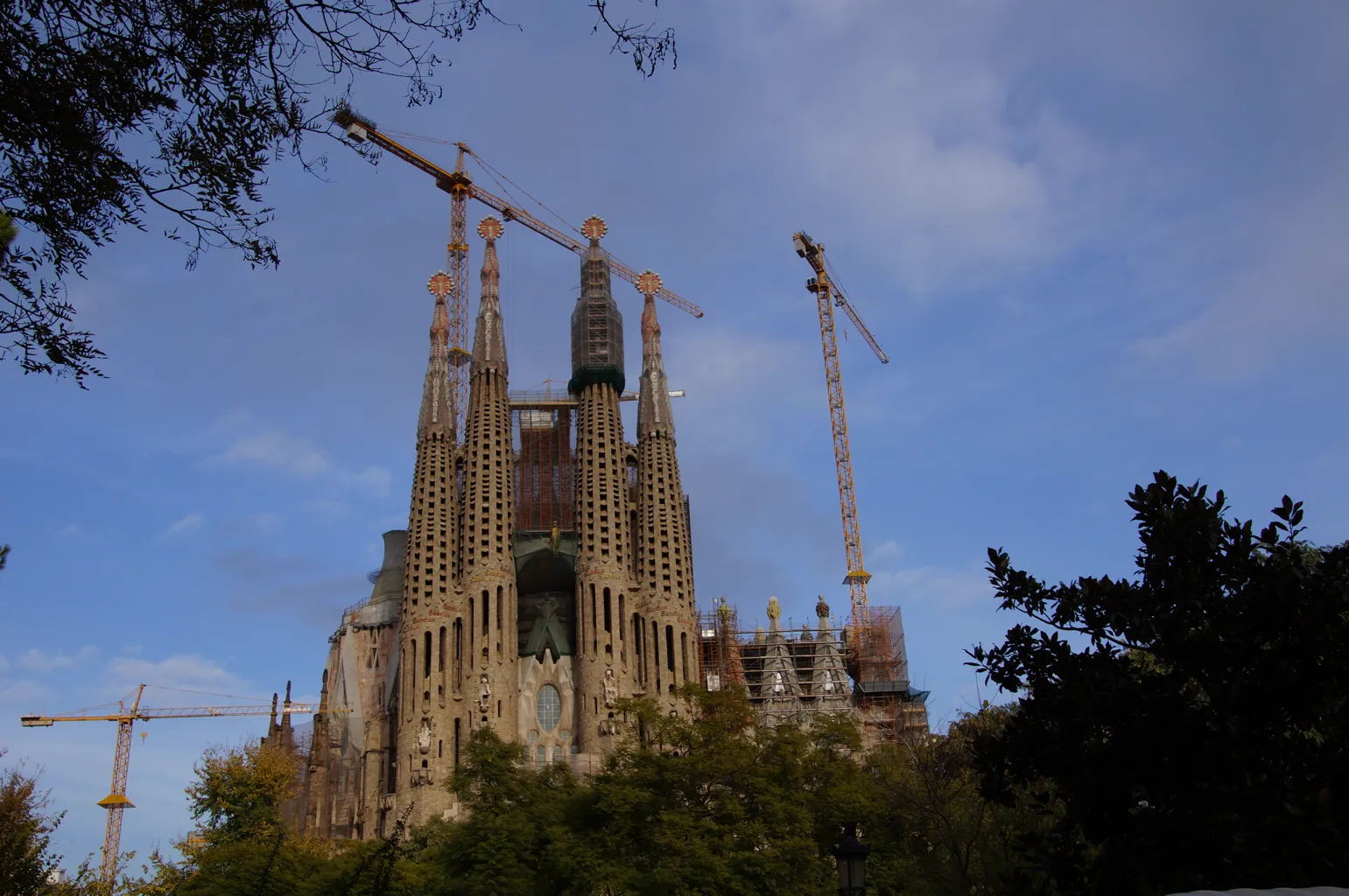
Construction and Architectural Style
Construction of Sagrada Família began on 19 March 1882 under architect Francisco de Paula del Villar. When Villar resigned in 1883, Gaudí took over as chief architect. He transformed the project with his unique style, combining Gothic and Art Nouveau forms. Gaudí devoted the rest of his life to the project and is buried in the church’s crypt. At his death in 1926, less than a quarter of the project was complete.
Relying solely on private donations, construction progressed slowly and was interrupted by the Spanish Civil War. In July 1936, anarchists set fire to the crypt and destroyed Gaudí’s original plans. Francesc de Paula Quintana took over site management in 1939. Construction resumed in the 1950s. Advancements in technology have since enabled faster progress. In 2010, construction passed the midpoint. The building is expected to be completed by 2026, the centenary of Gaudí’s death.
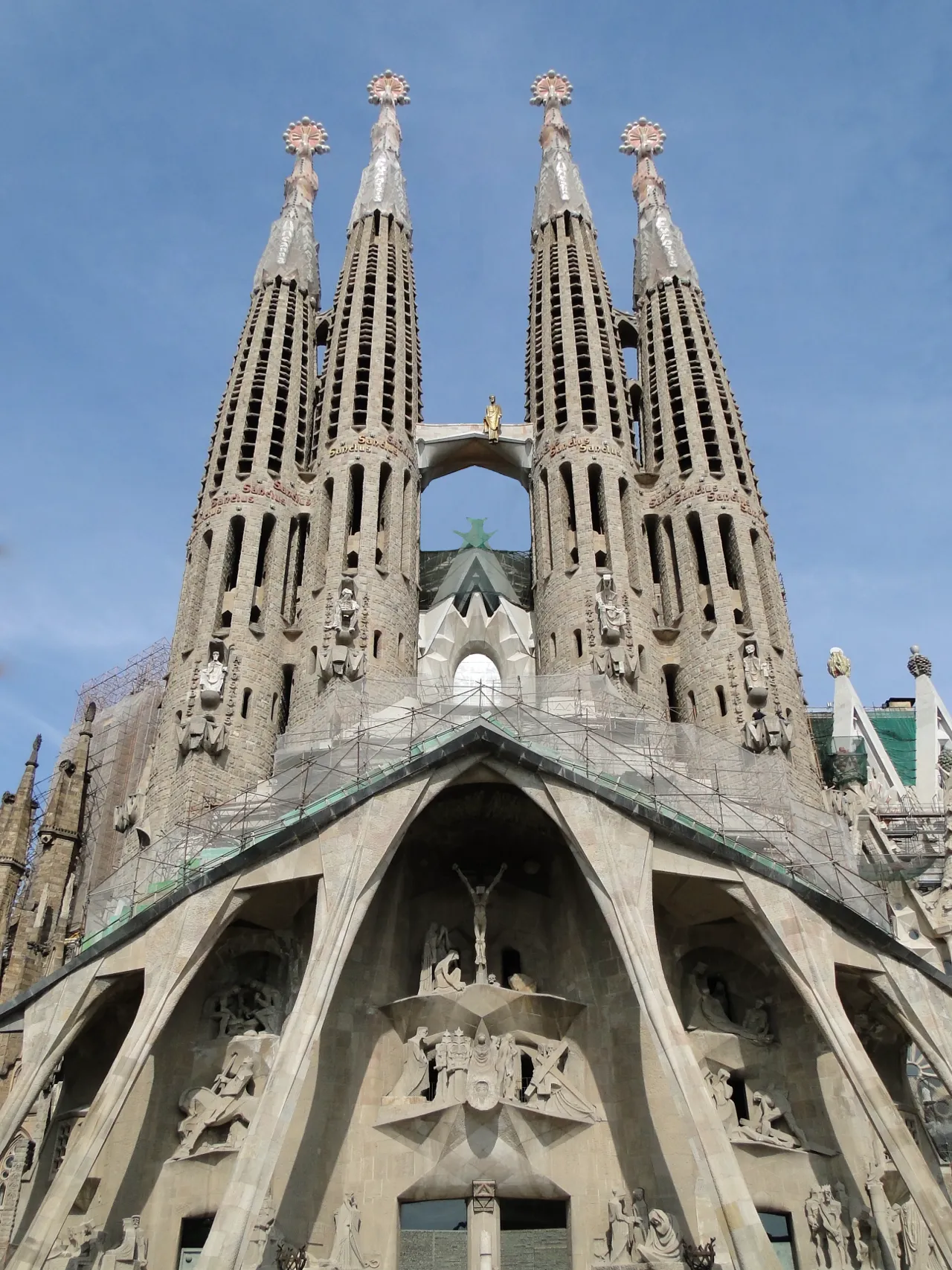
Consecration and Current Status
On 7 November 2010, Pope Benedict XVI consecrated the church and proclaimed it a minor basilica. The main nave was covered, and an organ was installed in mid-2010, allowing the building to be used for liturgies. The church was closed during the COVID-19 pandemic but reopened to key workers on 4 July 2020.
Architectural Features
Sagrada Família’s design includes three grand façades: the Nativity, Passion, and Glory façades. The Nativity façade, built before 1935, bears the most direct Gaudí influence. The Passion façade, built according to Gaudí’s 1917 design, began construction in 1954. The Glory façade, the largest and most monumental, began construction in 2002.
The church plan is that of a Latin cross with five aisles. The central nave vaults reach 45 meters, while the side nave vaults reach 30 meters. The transept has three aisles. The columns are on a 7.5-meter grid. The crossing rests on four central columns of porphyry supporting a great hyperboloid. The central vault reaches 60 meters, and the apse is capped by a hyperboloid vault reaching 75 meters.
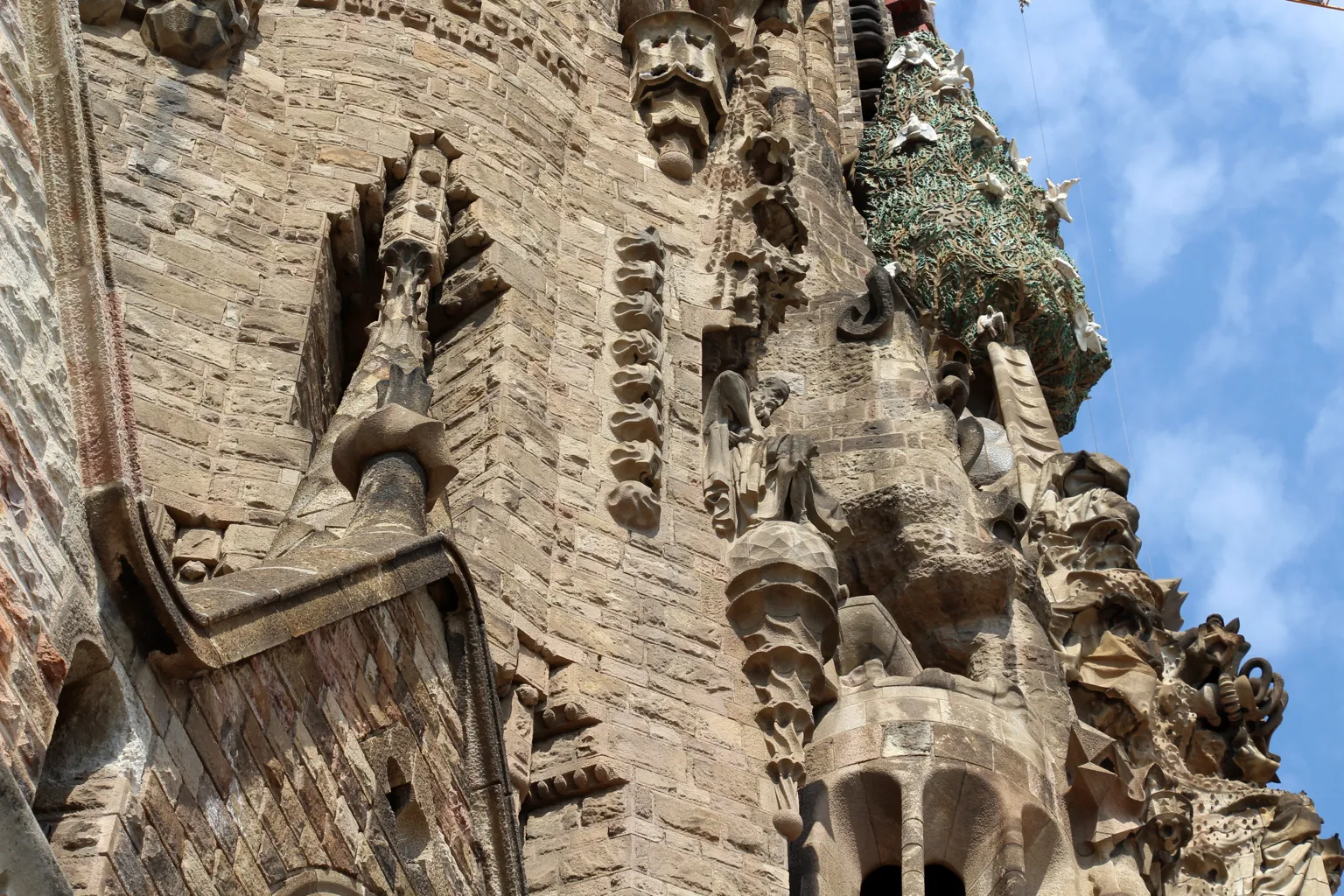
Symbolism and Decorations
Themes throughout the decoration include words from the liturgy. The steeples are decorated with words such as “Hosanna,” “Excelsis,” and “Sanctus.” The great doors of the Passion façade reproduce excerpts of the Passion of Jesus from the New Testament. The Glory façade will be decorated with words from the Apostles’ Creed. The main door reproduces the entire Lord’s Prayer in Catalan, surrounded by multiple variations of “Give us this day our daily bread” in other languages.
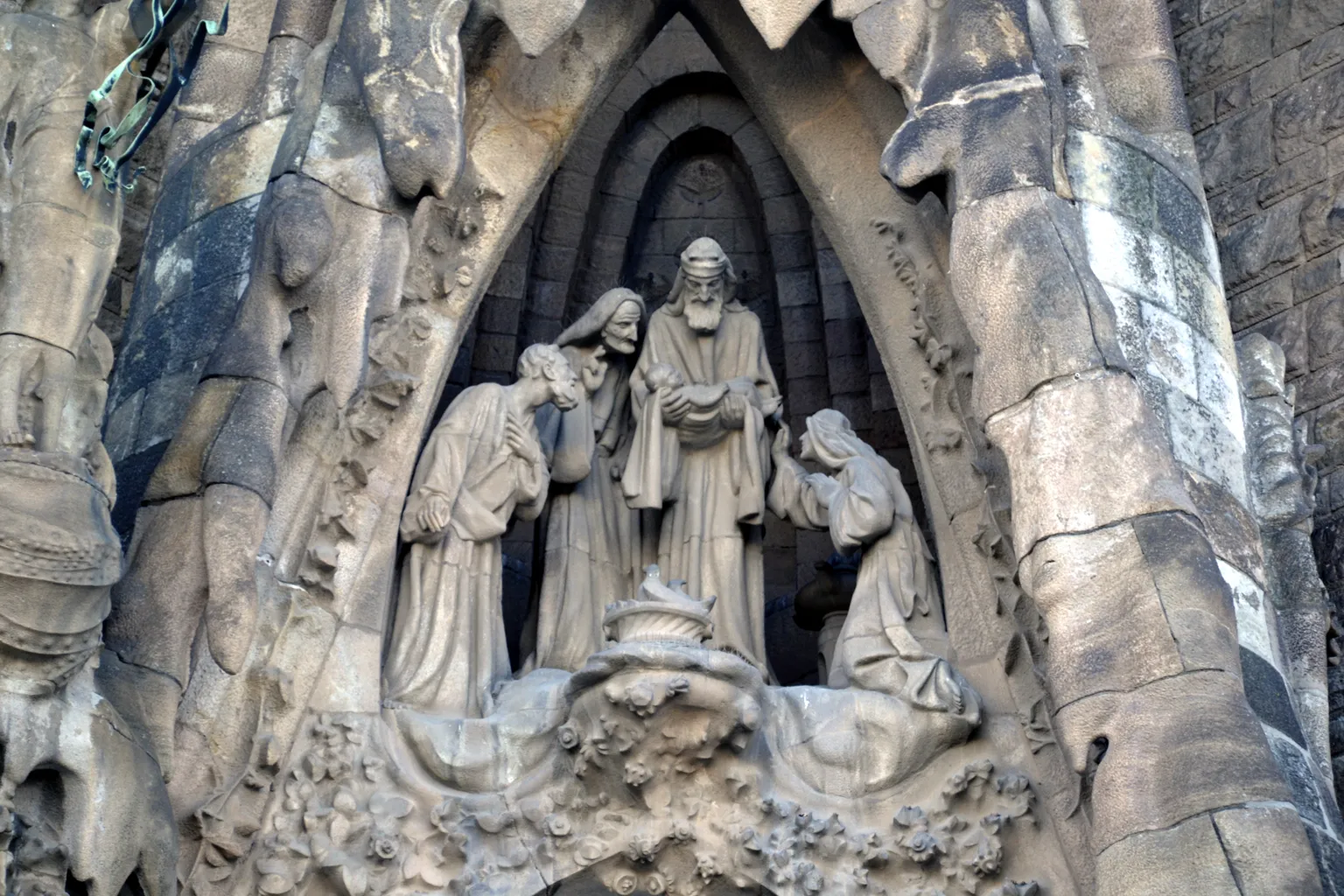
Visitor Access and Funding
Visitors can access the Nave, Crypt, Museum, Shop, and the Passion and Nativity steeples. Entrance to the steeples requires a reservation and advance purchase of a ticket. Descent is via a narrow spiral staircase of over 300 steps. Online ticket purchase has been available since June 2017.
Construction on Sagrada Família is not supported by any government or official church sources. Private patrons funded the initial stages. Money from tickets purchased by tourists now pays for the work, and private donations are accepted. The construction budget for 2009 was €18 million. In October 2018, Sagrada Família trustees agreed to pay city authorities €36 million for a building permit, after 136 years of unlicensed construction.
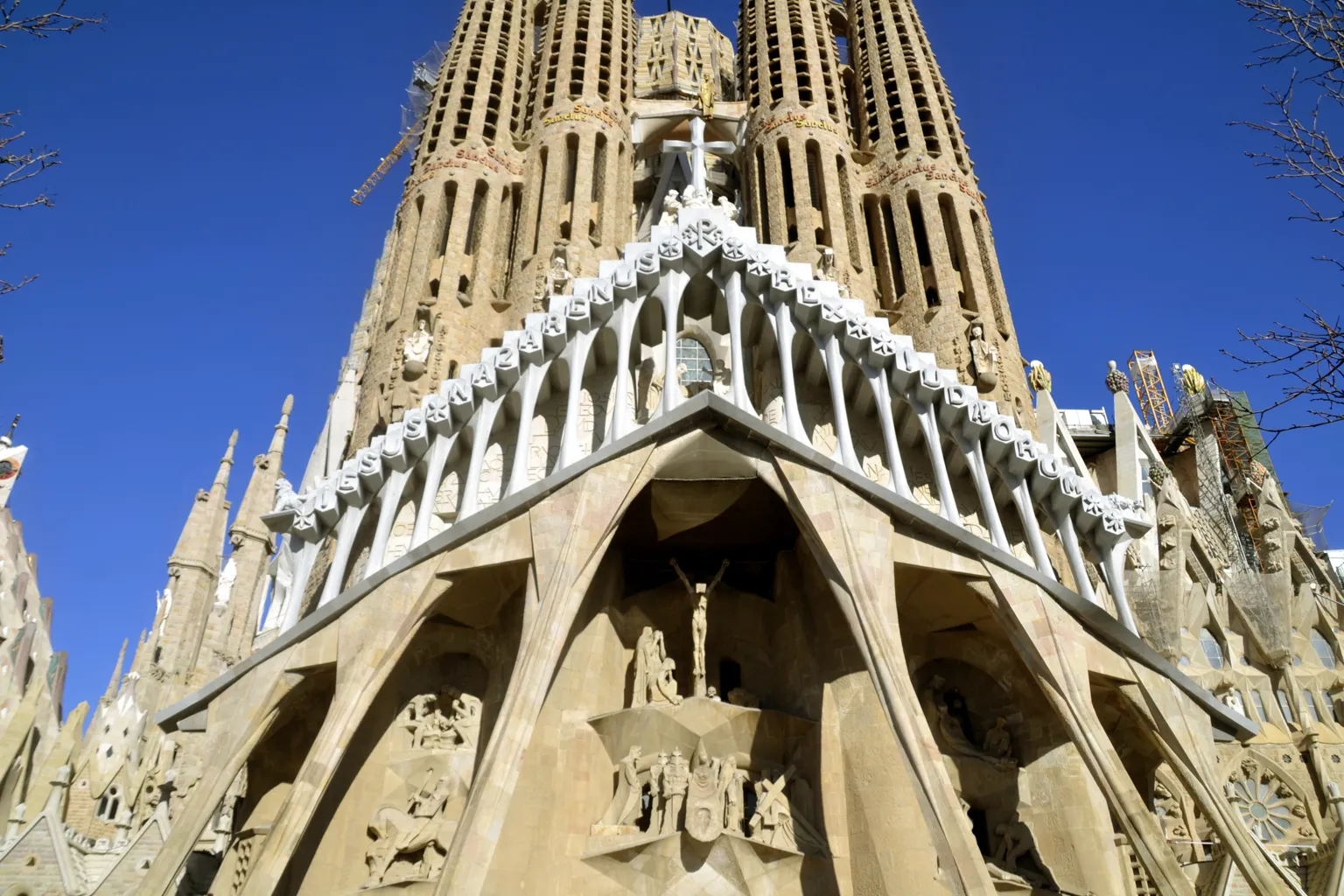
Conclusion
Sagrada Família stands as a testament to Antoni Gaudí’s architectural genius. Despite its long construction period, it remains one of the most iconic structures in the world. Its unique design and intricate details continue to attract millions of visitors each year.
Sources: Wikipedia

